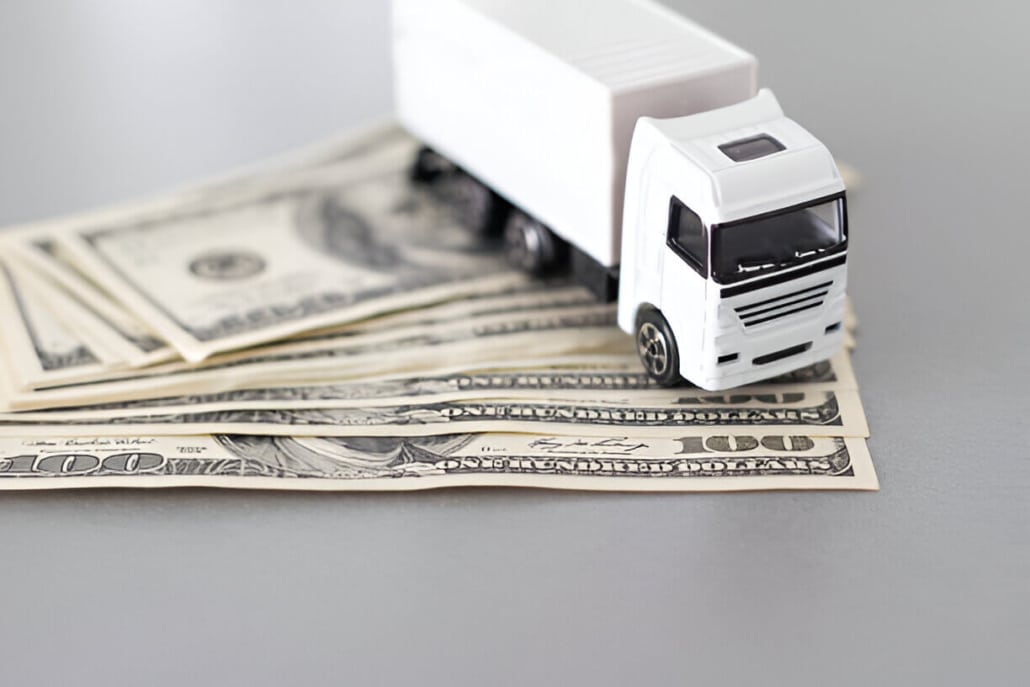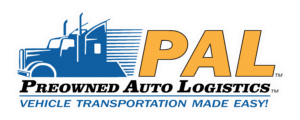What Affects Your Auto Shipping Rate: Distance, Size, and Weight
What Affects Your Auto Shipping Rate: Distance, Size, and Weight
Are you planning to ship your vehicle? Knowing how auto transport costs are calculated will ease the process and keep you on the same page. Three critical aspects determine the cost of shipping your vehicle: distance, size, and weight. Whether you want to transport your vehicle down the road to its next destination within the state or you intend on coast-to-coast transport, knowing what increases the estimate will set you up for better preparation (and savings!) Discover how distance, size, and weight will impact the cost of shipping your car.
Key Takeaways
- Distance is important. Longer trips cost less for each mile. Choose pickup spots near busy roads to save money.
- Car size and weight change the price. More significantly, heavier cars need more space and fuel, making shipping expensive.
- The transport type changes the cost. Open carriers cost less, but leave your car open to the weather. Enclosed carriers protect your vehicle but cost more.
- Book early and stay flexible with dates, helping you get better prices and more choices, especially when it’s busy.
- Always check quotes from licensed companies. Knowing the details of your quote avoids hidden costs and gets you the best deal.
Key Factors That Affect Car Shipping Costs
Here are some crucial factors that impact the shipping cost; let’s uncover them one by one:
Distance
How far your car needs to go affects the price. Longer trips use more fuel, time, and effort, making them cost more. But, the cost per mile often drops for longer trips. For instance, shipping a car across the country may cost less per mile than moving it within one state.
The route also matters. Busy routes between big cities are usually cheaper. This is because carriers often travel these paths. On the other hand, shipping to remote areas can cost more. Fewer carriers go to these places, so prices are higher. Longer routes may also mean extra costs for fuel, driver stays, and truck upkeep.
Vehicle size and dimensions
Your car’s size and shape affect shipping costs. More oversized vehicles like SUVs and trucks take up more space on the carrier. This means fewer cars can fit, raising the cost per car. Large vehicles might also need special tools to load and unload, which adds to the price.
Cars with unique shapes or changes can make things more complicated. For instance, a car with a modified roof or a unique body kit may need custom solutions, which cost more for labor and tools. Preowned Auto Logistics gives accurate quotes for all types of cars, from small ones to large trucks.
Vehicle weight
Your car’s weight is another significant factor. Heavier cars use more fuel during transport, which raises costs. Trucks have legal weight limits, which means they can only carry a certain amount of weight. So, heavier cars mean fewer can fit on one trip, increasing the cost per car.
Heavy cars also wear out transport equipment faster. This adds to maintenance costs for carriers, which they pass on to you. For example, trucks carrying heavy vehicles may need new tires or engine repairs more often.

Additional Pricing Factors to Know About
Transport Type
The kind of transport you pick affects the cost. Open carriers are common and cheaper. They carry many cars at once, saving money. But, your vehicle is exposed to weather and dirt. If you have a fancy or unique car, use an enclosed carrier. These protect your vehicle better but cost more.
Need your car fast? Expedited shipping delivers quickly but costs extra. If you can wait, a flexible schedule saves money.
Tip: Use an open carrier if your car doesn’t need special care. It’s the cheapest option.
Pickup and delivery spots
Where your car is picked up or dropped off matters; cities and places near highways are cheaper. Carriers can easily reach these areas, lowering costs. For example, cities like Fort Lauderdale and New York City are popular and affordable.
Rural or faraway places cost more. Fewer carriers go there, and extra travel adds to the price.
- Cities: Affordable and easy to access.
- Rural areas: Cost more due to fewer carriers.
- Popular routes: Routes like Florida to New York are budget-friendly.
Note: To save money, choose a city nearby for pickup or delivery instead of a rural spot.
Seasonal Demand
The time of year changes shipping prices. Summer and holidays are busy times for car shipping. Families move, vacation, or prepare for holidays, raising demand. More demand means higher prices and fewer carriers.
| Time of Year | Effect on Shipping Costs |
| Summer | Prices rise due to high demand and fewer carriers. |
| Moving Season | More people moving increases shipping needs. |
| Vacation Season | Families ship cars to vacation spots, raising demand. |
| Holiday Season | November and December see higher prices from demand. |
Fuel Costs and Economic Conditions
- Changes in fuel prices affect car shipping costs.
- Market trends and carrier availability change prices during the year.
The price of fuel is a significant factor in determining the cost of shipping a car. When fuel prices rise, carriers incur higher operational costs, which are often passed on to the customer. For instance, during peak travel periods, the increased demand for fuel leads to higher prices, thereby raising shipping rates.
The economy also changes shipping costs. When the economy is strong, more people ship cars. This raises demand for carriers and can make prices higher. But during tough economic times, fewer people ship cars. This might lower costs for a short time. However, carriers may offer fewer services to match lower demand, which can still affect prices.
Shipping companies try to handle changing fuel costs in innovative ways. They might plan better routes to use less fuel or buy trucks that save fuel. These choices help lower their costs but can also change what you pay. For example, a company with fuel-saving trucks might charge less than others.
Understanding how fuel and the economy influence prices empowers you to plan effectively. By remaining adaptable and booking in advance, you can secure a favorable deal for shipping your car.
How to Get the Best Auto Shipping Price
Compare quotes from trusted and insured companies
To make informed decisions and save money, compare prices from different companies. Request quotes from 3-5 licensed and insured providers. This practice not only gives you a clear picture of the typical cost of shipping cars but also prevents you from overpaying. It enables you to find the best deal that suits your requirements.
Book early to get better prices and more options.
Proactive planning is key to saving money on car shipping. Booking early not only secures you lower prices but also provides you with a wider range of carrier options. Waiting until the last minute can be more expensive due to limited carrier availability. Scheduling in advance helps you avoid stress and ensures a reasonable price.
Be open to flexible pickup and delivery times.
Flexibility in pickup and delivery times can lead to cost savings. Providing carriers with more time to plan their routes can result in more efficient and cost-effective shipping. Additionally, choosing less busy months, such as February, for shipping can lead to better deals as fewer people are shipping cars during these times.
Pick the best transport option for your car and budget
Choosing the right way to ship your vehicle keeps it safe. It also helps you stay within your budget. Different vehicles need different shipping methods. Knowing your options enables you to decide wisely.

- Open carrier transport
Open carriers are the cheapest and most popular choice. They carry many cars at once, which lowers the cost. If your car is a regular model and doesn’t need extra care, this is a good option. But your car will be open to weather and dirt while traveling.
- Enclosed carrier transport
Enclosed carriers protect your car from weather and dirt. This is great for fancy, old, or unique vehicles that need extra care. It costs more than open carriers but keeps your car safer.
- Specialized transport for oversized vehicles
Big trucks, vans, or changed cars may need special carriers. These vehicles are often too large or heavy for regular carriers. Special carriers have the right tools to move and secure them safely.
- Expedited shipping
Need your car fast? Expedited shipping delivers it quicker. This is helpful in emergencies but costs more. You can use this option with both open and enclosed carriers.
By matching your car with the correct shipping method, you save money and keep it safe. Open carriers are cheaper, while enclosed ones offer more protection. Knowing your choices helps you pick the best option.
Common Mistakes to Avoid
Picking the cheapest option without checking company credentials
Choosing the lowest price may be wise, but it can cause issues. Some cheap companies may not have proper licenses or insurance. This puts your car at risk during shipping. Hidden fees might also raise the final cost.
Always check if the company is licensed and insured. Read reviews from past customers to see if they are reliable. Paying a bit more for a trusted company can save you trouble later.
Tip: Focus on safety and quality, not just the lowest price.
Forgetting how vehicle size or changes affect the cost
The size of your car and any changes can raise costs. Big vehicles like SUVs take up more space on the truck. This means fewer cars fit, so the cost per car goes up. Changes like big tires or roof racks may need special tools or handling.
When asking for a price, share exact details about your car. Include its size, weight, and any changes. Being honest helps you get the right price and avoids surprises.
Did You Know? Taking off things like roof racks can lower shipping costs.
Not considering how seasons change prices and availability
The time of year affects how much shipping costs. In busy times like summer or holidays, prices go up because more people ship cars. Fewer spots are available, making it harder to book.
Ship your car during less busy times to save money. If you need to ship in a busy season, book early to get a better price. Being flexible with dates can also help you avoid higher costs.
Pro Tip: Learn about seasonal trends and plan to save money.
Always ask for a detailed breakdown of your quote.
When you get a shipping quote, don’t just look at the total price. Not asking for details can lead to surprise costs or confusion. A clear breakdown shows what you’re paying for and avoids hidden fees.
Here’s what to check in a detailed quote:
- Base Shipping Cost: This is the main charge for moving your car. It depends on distance, size, and weight.
- Fuel Surcharges: Fuel prices change, so some companies add extra fees for this.
- Insurance Coverage: Make sure insurance is included and know what it covers. This protects your car during the trip.
- Additional Services: Look for extra charges like faster shipping, door-to-door delivery, or handling big vehicles.
- Taxes and Tolls: Some quotes include these, while others list them separately.
Tip: Get a written quote. It keeps things clear and gives you proof if questions come up.
Knowing the breakdown helps you compare quotes from different companies. A cheaper price might leave out important things like insurance or taxes. By understanding what’s included, you can pick the best option and avoid problems.
Pro Tip: If a company won’t give a detailed breakdown, it’s a warning sign. Trusted companies, like Preowned Auto Logistics, are honest and care about their customers.
Conclusion
Asking for details ensures you know what you’re paying for. It also helps you avoid extra fees and choose the exemplary service for your needs. Knowing how distance, size, and weight change shipping costs enables you to plan better. Short trips cost more per mile, while long trips are efficient. Bigger or heavier cars need more space and fuel, raising costs. Understanding these factors lets you pick the best shipping choice for your vehicle and budget. This way, you avoid unexpected costs and feel sure about your options.
Frequently Asked Questions (PAA)
1. What is the average cost of shipping a car?
The price depends on distance, car size, and transport type. Usually, shipping a car in the U.S. costs $500 to $1,500. To get an exact price, ask for a quote from a reliable company.
2. How long does it take to ship a car?
Delivery time depends on how far the car travels. Short trips take 1-3 days, while long ones take 7-10 days. Weather and traffic can also delay delivery.
3. Can I ship personal items in my car?
Most companies don’t allow personal items due to weight rules and risks. Some might enable a few belongings but always check with your carrier first.
4. Is my car insured during transport?
Good shipping companies include insurance to protect your car. This covers damage during the trip. Always ask about the insurance details and what they contain.
5. What should I do to prepare my car for shipping?
Wash your car, take out personal items, and take photos of its condition. Keep the gas tank only 1/4 full, and turn off the alarms. These steps make shipping more manageable and safer.




